
The Central Pacific Railroad (CPRR) was a rail company chartered by U.S. Congress in 1862 to build a railroad eastwards from Sacramento, California, to complete most of the western part of the "First transcontinental railroad" in North America. Incorporated in 1861, CPRR ceased independent operations in 1885 when the railroad was leased to the Southern Pacific Railroad. Its assets were formally merged into Southern Pacific in 1959.

Henry Edwards Huntington was an American railroad magnate and collector of art and rare books. Huntington settled in Los Angeles, where he owned the Pacific Electric Railway as well as substantial real estate interests. In addition to being a businessman and art collector, Huntington was a major booster for Los Angeles in the late 19th and early 20th centuries. Many places in California are named after him.

Collis Potter Huntington was an American industrialist and railway magnate. He was one of the Big Four of western railroading who invested in Theodore Judah's idea to build the Central Pacific Railroad as part of the first U.S. transcontinental railroad. Huntington helped lead and develop other major interstate lines, such as the Southern Pacific Railroad and the Chesapeake & Ohio Railway (C&O), which he was recruited to help complete. The C&O, completed in 1873, fulfilled a long-held dream of Virginians of a rail link from the James River at Richmond to the Ohio River Valley. The new railroad facilities adjacent to the river there resulted in expansion of the former small town of Guyandotte, West Virginia into part of a new city which was named Huntington in his honor.

The Southern Pacific was an American Class I railroad network that existed from 1865 to 1996 and operated largely in the Western United States. The system was operated by various companies under the names Southern Pacific Railroad, Southern Pacific Company and Southern Pacific Transportation Company.

Charles Crocker was an American railroad executive who was one of the founders of the Central Pacific Railroad, which constructed the westernmost portion of the first transcontinental railroad, and took control with partners of the Southern Pacific Railroad.

"The Big Four" was the name popularly given to the famous and influential businessmen, and railroad tycoons — also called robber barons — who funded the Central Pacific Railroad (C.P.R.R.), which formed the western portion through the Sierra Nevada and the Rocky Mountains of the First Transcontinental Railroad in the United States, built from the mid-continent at the Missouri River to the Pacific Ocean during the middle and late 1860s.
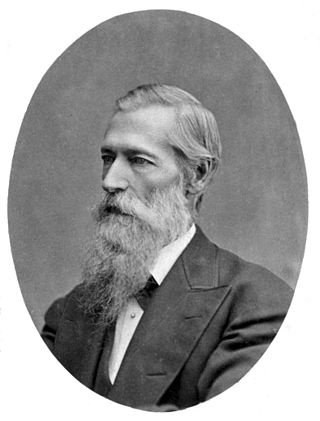
Mark Hopkins Jr. was an American railroad executive. He was one of four principal investors that funded Theodore D. Judah's idea of building a railway over the Sierra Nevada from Sacramento, California to Promontory, Utah. They formed the Central Pacific Railroad along with Leland Stanford, Charles Crocker, and Collis Huntington in 1861.
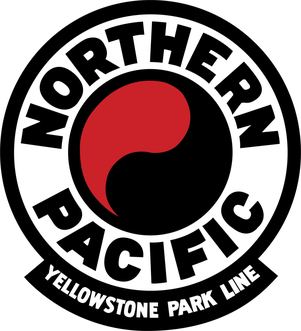
The Northern Pacific Railway was an important transcontinental railroad that operated across the northern tier of the western United States, from Minnesota to the Pacific Northwest. It was approved and chartered in 1864 by the 38th Congress of the United States in the national / federal capital of Washington, D.C., during the last years of the American Civil War (1861-1865), and given nearly 40 million acres of adjacent land grants, which it used to raise additional money in Europe, for construction funding.

The Richmond and Danville Railroad (R&D) Company was a railroad that operated independently from 1847 until 1894, first in the U.S. state of Virginia, and later on 3,300 miles (5,300 km) of track in nine states.

William Henry Crocker I was a member of the wealthy Crocker family and a prominent member of the Republican Party. Over the course of his business career, he became the president of Crocker National Bank.

The Arcata and Mad River Railroad, founded in 1854, was the oldest working railroad in California. It operated on a unique narrow gauge until the 1940s when standard gauge rails were laid. Service ceased in 1983 due to landslides. It is California Historical Landmark #842.
The Sacramento Valley Railroad (SVRR) was incorporated on August 4, 1852, the first transit railroad company incorporated in California. Construction did not begin until February 1855 because of financial and right of way issues, and its first train operated on February 22, 1856. Although the oldest working railroad in the state was the Arcata and Mad River Railroad, first operational in December 15, 1854, the Sacramento Valley Railroad was the West's pioneering incorporated railroad, forerunner to the Central Pacific.

The Alabama Great Southern Railroad is a railroad in the U.S. states of Alabama, Georgia, Louisiana, Mississippi, and Tennessee. It is an operating subsidiary of the Norfolk Southern Corporation (NS), running southwest from Chattanooga to New Orleans through Birmingham and Meridian. The AGS also owns about a 30% interest in the Canadian Pacific Kansas City-controlled Meridian-Shreveport Meridian Speedway.

Charles Frederick Crocker was vice president of the Southern Pacific Railroad Company and a member of the wealthy Crocker family.
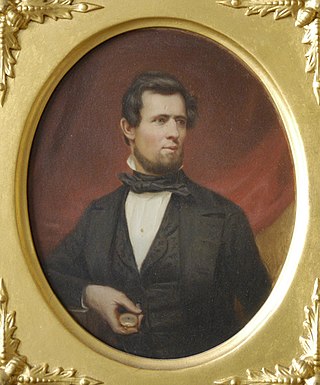
Stephen William Shaw was a California '49er and portrait painter who helped discover and name Humboldt Bay and introduced viticulture to Sonoma County by 1864.

Henry J. Crocker was a prominent San Franciscan businessman, one of the Committee of Fifty formed after the 1906 San Francisco earthquake; he was also a noted philatelist.
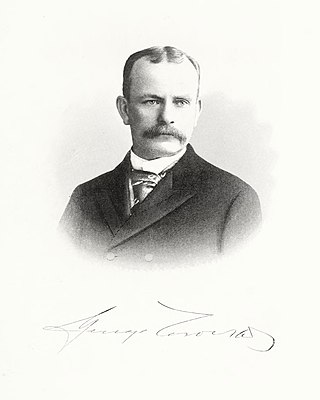
George Crocker was an American businessman and a member of the wealthy Crocker family. A member of Tuller & Co., he was also a director of several corporations, including Trust Company of America. He was second vice president of the Southern Pacific Railroad. In 1909, Crocker was valued between $10 million to $20 million. The 75-room, three-story Crocker Mansion was built in 1907 for Crocker in Mahwah, New Jersey, and is one of New Jersey's historical landmarks.

Charles Templeton Crocker was an American philanthropist, art patron and yachtsman. He was a past president of the California Historical Society and a member of the board of directors for over twenty years. He also wrote the libretto to the first American opera that was produced in Europe; helped popularize French Art Deco in America; and funded and headed expeditions with the California Academy of Sciences and other academic institutions aboard his personal yacht Zaca. The town of Templeton is named after him.
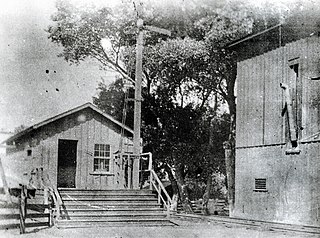
Lang Southern Pacific Station is a former Southern Pacific railway station located in Soledad Canyon near the eastern end of Santa Clarita, California. On September 5, 1876, the first railway to Los Angeles was completed at this site. The Lang Southern Pacific Station was designated a California Historic Landmark on May 22, 1957.




















